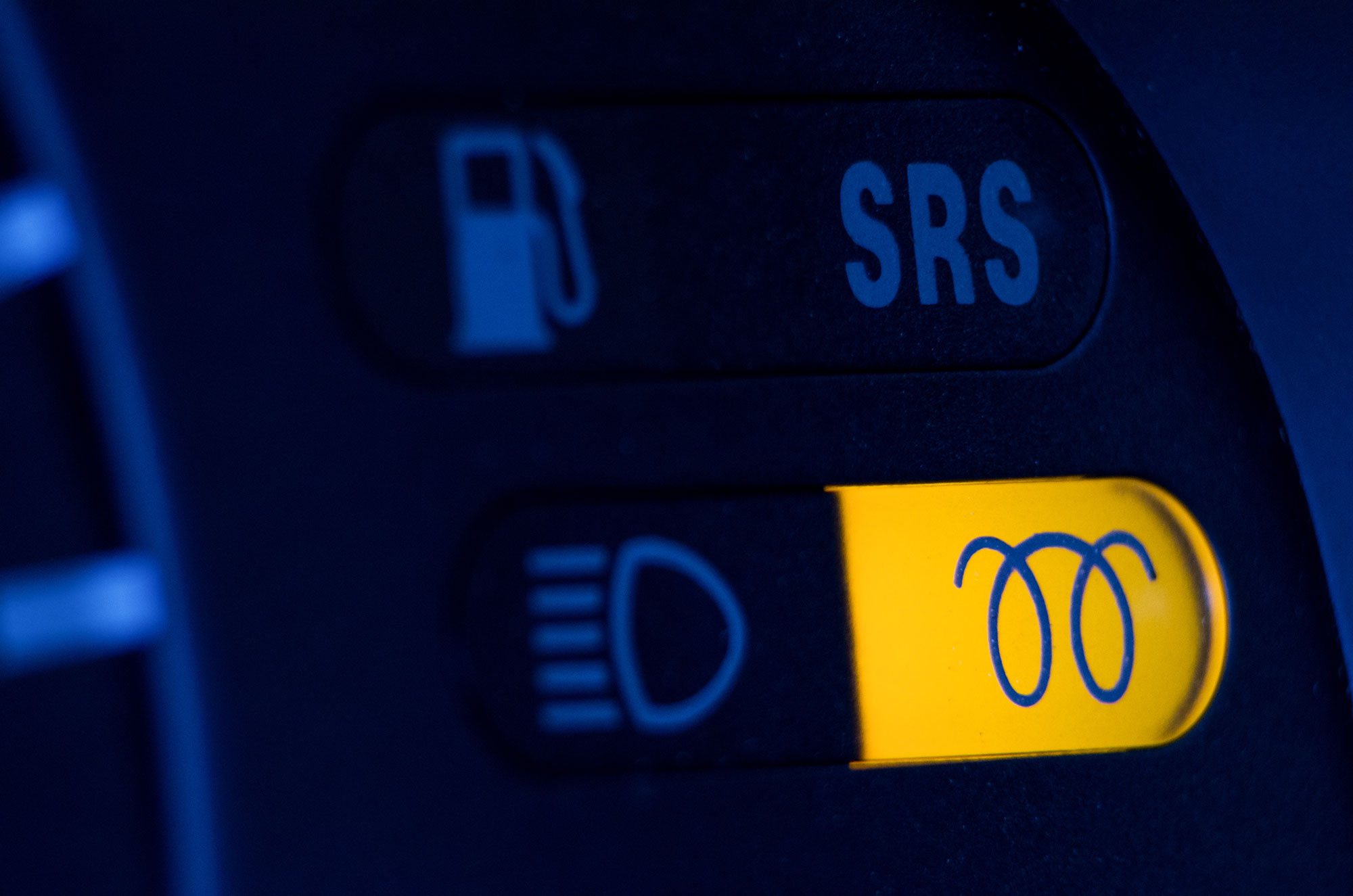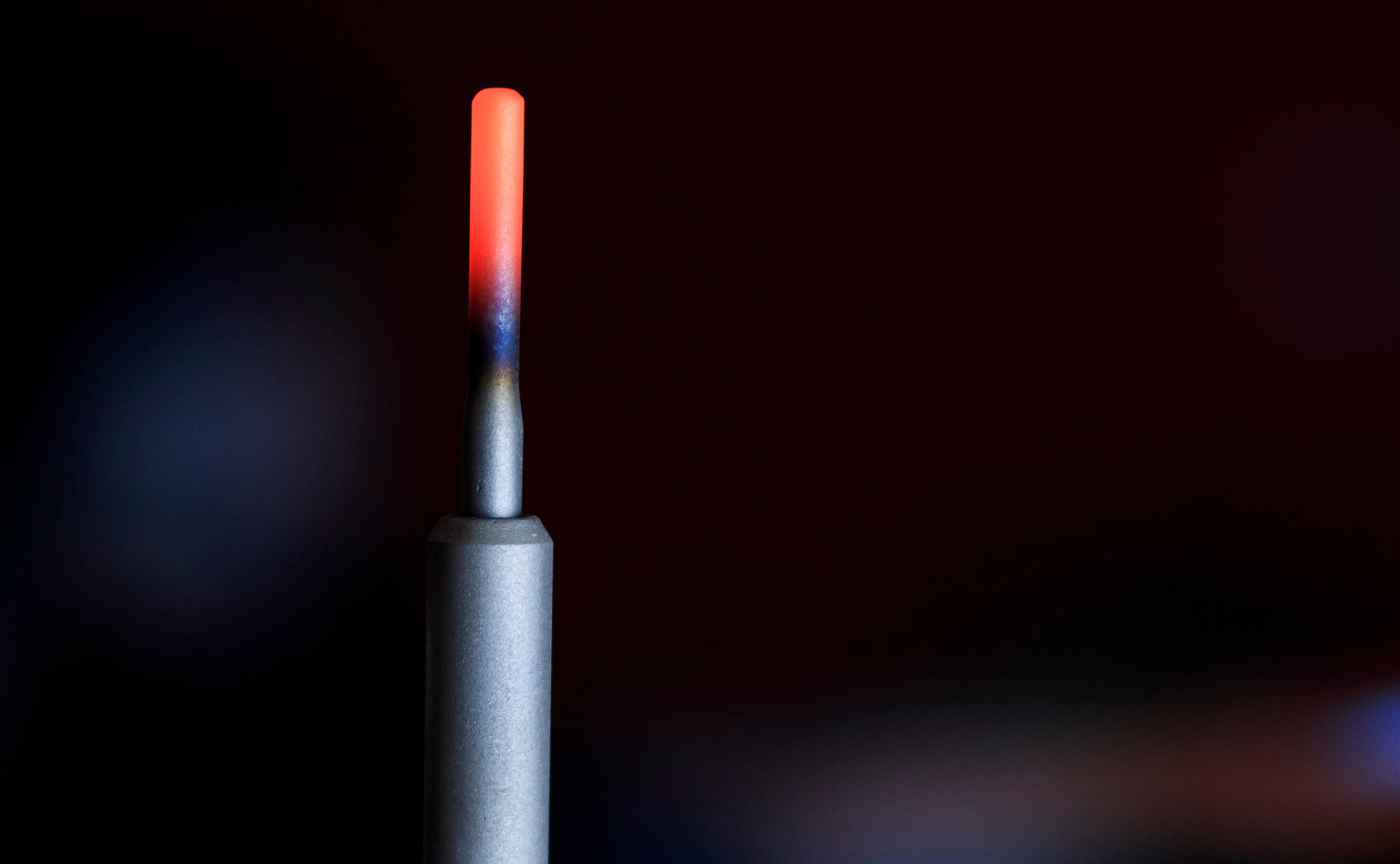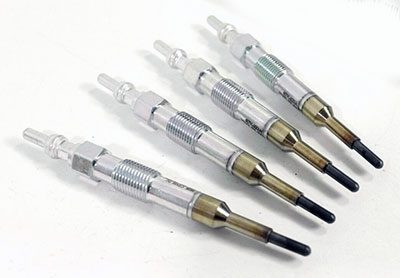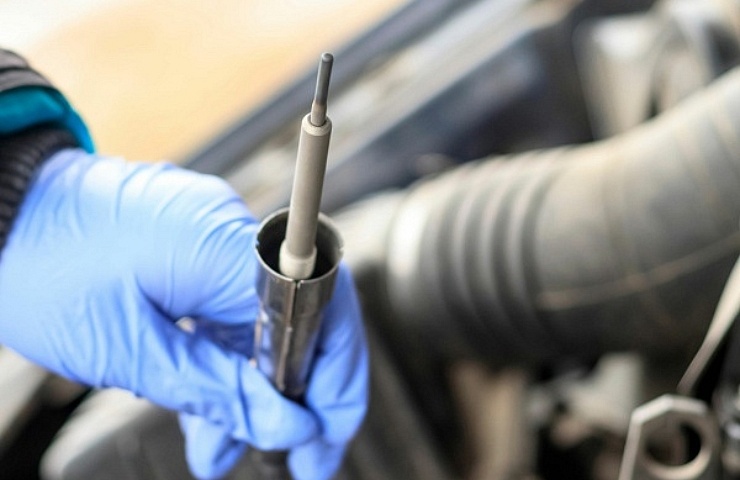Contents
‘Wait To Start’ Warning
If you own a diesel, you have seen the “wait to start” warning light on the dash. Depending on the make and model of your vehicle, that light may convey its message in words (or a squiggle that looks like two cursive Os together.)
This warm-up is used on every diesel-powered vehicle, but you may never notice it. Some vehicles, such as newer diesel trucks, heat up in milliseconds.

Diesel drivers need to wait for the squiggle light to go off before starting the vehicle.
Diesel drivers know to wait until that light goes off to start the engine. That little light is vital to the life of your diesel engine, specifically the glow plugs. You can damage this crucial cold-start mechanism if you just hop in and crank the engine.
A glow plug is similar in shape to a spark plug and gets hot when you turn on the ignition in a diesel vehicle. Diesel fuel is tough to light. You would struggle to light it with a match. So, diesel engines don’t use an incendiary device like a spark plug. They use extreme pressure to auto-ignite the diesel.
Most modern diesel engines pressurize the fuel to well over 20,000 psi in the fuel lines. Then, it is injected into the cylinders and squeezed even more to a 16:1 compression ratio. This compression heats the diesel so much that it ignites on its own.

A heated glow plug can reach 1,300 degrees Celsius.
When the weather gets cold, diesel becomes even more challenging to auto-ignite. Cold diesel is much thicker, and the air and the engine are much colder as well, making it difficult to reach the auto-ignition temperature with just compression. When heated, a glow plug can reach 1,300 degrees Celsius, which is more than enough to kick off the combustion process.
Glow plugs have other functions, but this is the main one. In newer diesels, the glow plugs operate while you drive to facilitate a more complete fuel burn for emissions.
Shop now for diesel vehiclesSymptoms of a Bad Glow Plug
Glow plugs wear out over time, just like spark plugs. They have about the same lifespan as spark plugs: 80,000 to 100,000 miles. They are installed in a similar location to spark plugs, one per cylinder for most diesel engines.
A glow plug looks more like a pencil than a spark plug, with a rounded probe tip. The tip is the business end of a glow plug, and this is the part you must take special care with. It is very common for the tip to break off during removal, and it will damage the piston, valves, and the combustion chamber itself if left in the engine.
Slow start – This is the first symptom of a bad glow plug. If everything else is operating correctly, but the engine is slow to start, the glow plugs might be getting weak.
Missing or rough run – Once the engine starts, bad glow plugs will cause missing and rough idle as the failure of the plugs progresses.

One bad glow plug can cause a hard start. If you can plug in the engine block heater and get the engine to start, your issue lies in the glow plug system.
Diesels with open chamber heads are easier to start without glow plugs. Still, the older pre-chambered diesels (also known as indirect injection systems) need the glow plugs to be in full working order. The pre-chamber generates a swirl effect on the diesel before the fuel and air enter the combustion chamber. This pre-chamber effectively isolates the heat from the fuel, making the glow plugs necessary to start a cold engine. Most modern diesel engines do not use pre-chambers for this reason.
Glow Plug Types
There are four main types of glow plugs for diesel engines: pressure sensors, ceramics, high-tech steel, and commercial. Here, we will focus on the passenger vehicle types.
You should replace your original glow plugs with the exact same type of plug (with the same voltage). The engine control system and plug control module won’t work with a different type of plug (without being re-flashed). For example, VW diesels that came with high-tech steel plugs were converted by dealers, and the modules were not upgraded. That caused engine failures. If you change plug types, the engine control module (ECU) must be reprogrammed, and some vehicles can’t be converted because the voltages are different.

PSG pressure-sensor glow plug
Pressure sensor (PSG) – This is a “smart” plug. Inside the tip is a sensor that measures the pressure inside the combustion chamber and sends that signal to the ECM to generate the correct heating pattern.

A set of ceramic glow plugs for a VW TDI
Ceramic (CGP) – Designed for extreme temperatures, the CGP can heat to 1500 degrees Celsius in under three seconds to get your engine started as quickly as possible. These are designed for low-compression diesel engines to accommodate EPA restrictions. A ceramic glow plug is much faster to heat than a typical steel unit.
High-tech steel – These come in two types: GE and GN. GN plugs are the modern three-phase glow plugs that heat quickly, stay hot during ignition, and cool off after three minutes. The plugs are long pencil-type. Older diesel engines use GE-type plugs, which used to take up to 30 seconds to heat, but modern high-tech steel allows them to heat up in just seven seconds. GE plugs are typically shorter and more the size of a spark plug.
Shop now for glow plugsHow to Replace Glow Plugs
Replacing a glow plug is about the same as replacing a spark plug, though some diesels are more challenging to access than others. Never attempt this work on a hot engine. Allow at least an hour after the engine was last run before starting this project.
- Locate the plugs on the engine. They should be on the side of the engine above the exhaust manifold.
- Work with one plug at a time and disconnect the terminal lead from each plug.
- Unthread the glow plug using a deep socket wrench or specialty tool (if required). These are often difficult to remove. After shutting off the engine, spray a bit of lubricating fluid on the plugs to help free up the threads.
- Take special care when sliding the plug out of the engine. Longer plugs are prone to breaking at the tip.
- Install the new plug in reverse of its removal.
- Move to the next plug and repeat the process.
If a plug breaks off in the head, specialty tools are made to help with removal. If you can’t remove the plug, stop before you break it off inside the head. Repairing a broken glow plug in the head can cost thousands of dollars.
Most glow plugs cost $10 to $25 each, though some can be as pricey as $350. Labor costs can run about the same as spark plugs, $150 to $200, as long as there are no problems.
Your diesel engine is the workhorse of your car or truck. Ensure it runs in top shape by regularly replacing your glow plugs with those designed for your specific engine.
Shop now for glow plugs




